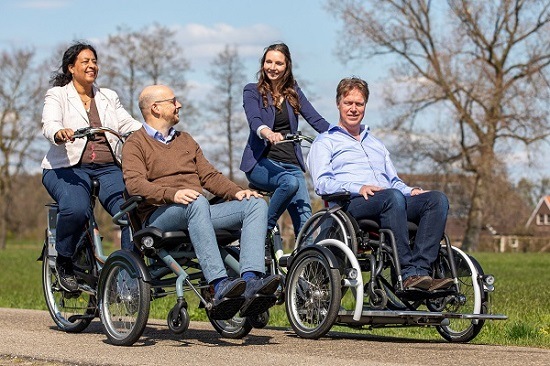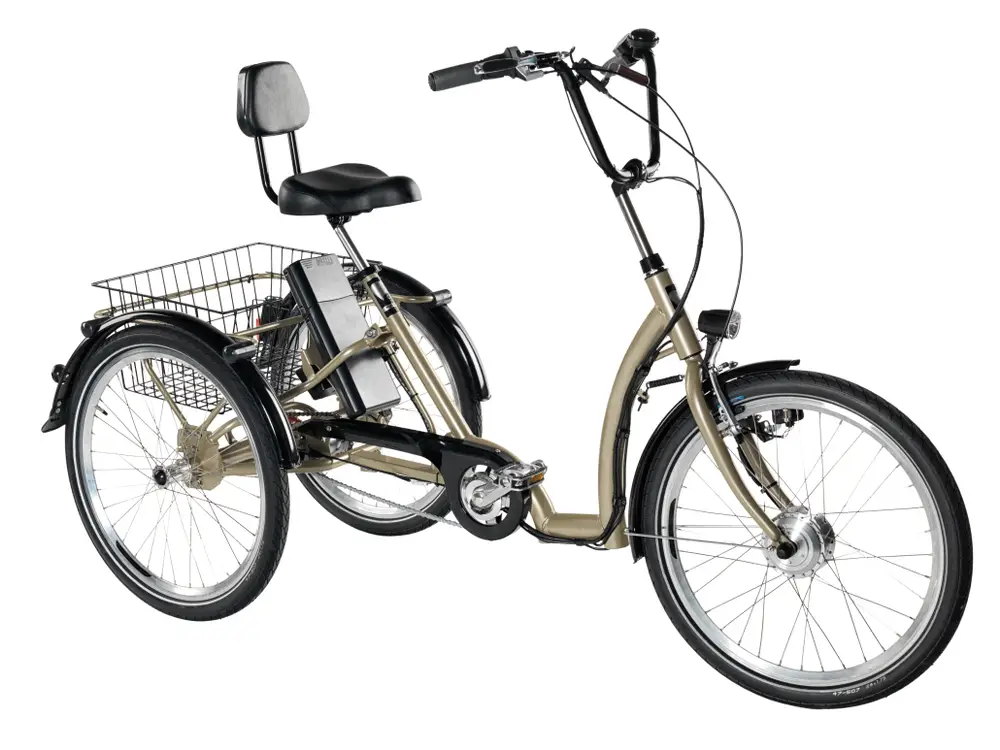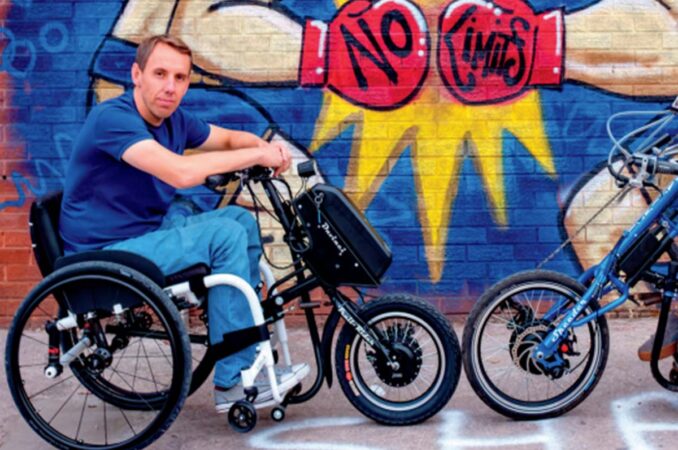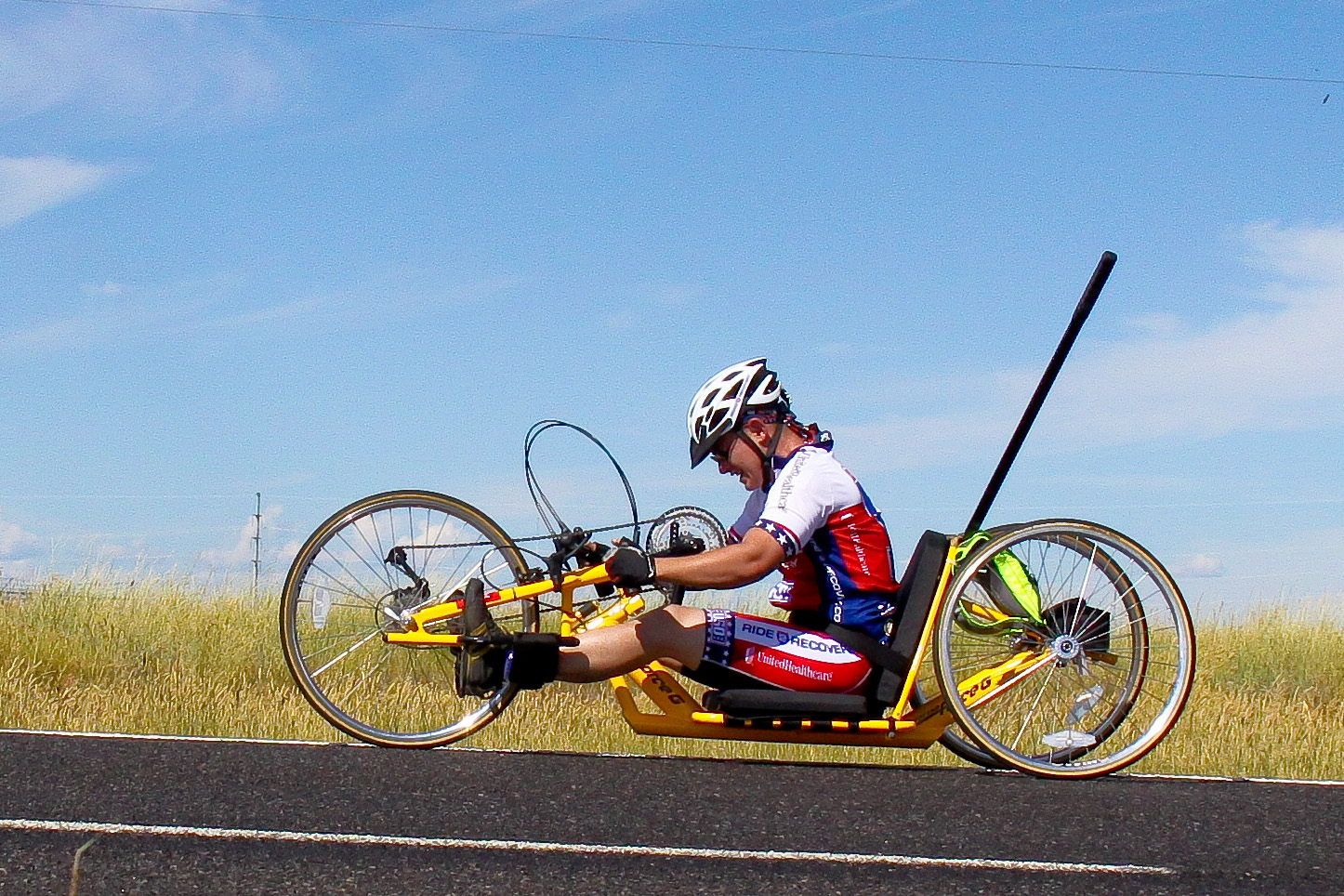Discovering the World of Adaptive Cycling for Disabled Adults
Adaptive cycling has emerged as a popular and transformative pastime for disabled adults, offering a unique blend of freedom, mobility, and independence. This form of cycling encompasses a variety of bicycles specifically designed to accommodate individuals with different abilities, ensuring safety, comfort, and enjoyment. Selecting the right bicycle for disabled adults is crucial, as it can significantly enhance their quality of life and overall well-being.
Understanding the Types of Adaptive Bicycles
Adaptive bicycles, also known as handcycles or disabled cycles, cater to the unique needs of individuals with disabilities, enabling them to enjoy the thrill of cycling. Various types of adaptive bicycles are available, each with distinct features and advantages for users with different abilities:
Handcycles
Handcycles are designed for people with lower body impairments, allowing them to propel themselves using their arms. These cycles often feature a recumbent seating position, which can reduce strain on the upper body and improve overall comfort. Handcycles come in both single and tandem configurations, making them suitable for various riding scenarios.
Recumbent Trikes
Recumbent trikes offer a laid-back seating position and three wheels for enhanced stability. They are an excellent option for individuals with balance issues, coordination difficulties, or limited leg strength. Some recumbent trikes even feature electric assist motors, providing an extra boost for those who need it.
Tandem Bikes
Tandem bikes enable individuals with varying abilities to ride together, with one person acting as the primary rider and the other providing additional support or enjoying the ride. These cycles promote social interaction and can help build trust and camaraderie between riders. Tandem bikes are available in both traditional and adaptive configurations.
Three-Wheelers
Three-wheelers provide increased stability and support for riders with balance or coordination challenges. They often feature a step-through design, making it easier for riders to mount and dismount. Three-wheelers can be manually propelled or equipped with electric assist motors for added convenience.
How to Choose the Perfect Adaptive Bicycle
Selecting the ideal adaptive bicycle for disabled adults involves careful consideration of various factors. By evaluating these aspects and consulting with healthcare professionals and adaptive cycling experts, riders can make informed decisions and enjoy a safe, comfortable, and enjoyable cycling experience.
Assessing Physical Abilities
Understanding the user’s physical abilities is crucial when choosing an adaptive bicycle. This includes evaluating their strength, balance, coordination, and range of motion. For example, individuals with limited leg strength may benefit from recumbent trikes or handcycles, while those with balance issues might prefer three-wheelers or tandem bikes.
Defining Riding Goals
Clearly defining riding goals can help narrow down the options for adaptive bicycles. For instance, riders seeking a leisurely, relaxed experience might prefer recumbent trikes, while those interested in competitive sports might opt for handcycles or high-performance three-wheelers.
Establishing a Budget
Adaptive bicycles can vary significantly in price, so it’s essential to establish a budget before making a purchase. While high-quality adaptive bicycles can be expensive, there are often financing options and grants available to help offset the cost. Additionally, used adaptive bicycles can be an affordable alternative for those on a tight budget.
Consulting Professionals
Healthcare professionals, such as physical therapists and occupational therapists, can provide valuable insights into selecting the right adaptive bicycle for an individual’s unique needs. Additionally, adaptive cycling experts can offer guidance on proper fit, customization options, and local resources for disabled adults interested in cycling.
Top Adaptive Bicycle Brands for Disabled Adults
Numerous reputable manufacturers specialize in producing high-quality adaptive bicycles for disabled adults. By exploring the offerings from these established brands, riders can find the perfect bicycle to meet their unique needs and preferences.
Top End
Top End, a division of Invacare, has been a leader in the adaptive sports industry for over 30 years. Their product line includes a wide range of handcycles, recumbent trikes, and three-wheelers designed for maximum performance, comfort, and accessibility. Top End’s commitment to innovation and quality has made them a trusted choice for disabled athletes and recreational cyclists alike.
Invacare
Invacare, a global leader in the manufacture of medical equipment, offers a selection of adaptive bicycles through their Top End division. Invacare’s mission is to make life’s experiences possible for individuals with disabilities, and their adaptive bicycles reflect this commitment to empowerment and independence.
Sun Seeker
Sun Seeker, a division of Advanced Mobility Products, specializes in recumbent trikes for both able-bodied and disabled riders. Their product line includes a variety of three-wheelers designed for comfort, stability, and ease of use. Sun Seeker’s adaptive trikes cater to riders with a wide range of abilities, ensuring a safe and enjoyable cycling experience for all.
Real-Life Success Stories: Disabled Adults Embracing Adaptive Cycling
Adaptive cycling has transformed the lives of countless disabled adults, providing them with newfound freedom, mobility, and independence. By sharing inspiring success stories, we can illustrate the profound impact that adaptive cycling can have on individuals’ physical, emotional, and social well-being.
John’s Journey to Competitive Handcycling
John, a paraplegic athlete, discovered adaptive cycling after a spinal cord injury left him searching for new ways to stay active. Initially drawn to handcycling for its competitive aspect, John quickly found that the sport offered far more than just physical challenge. Through handcycling, John has forged new friendships, traveled the world, and even competed in international races, proving that disability need not be a barrier to achieving one’s dreams.
Sarah’s Recumbent Trike Adventures
Sarah, a woman with multiple sclerosis, turned to adaptive cycling as a means of maintaining her independence and combating the symptoms of her condition. After trying various adaptive bicycles, Sarah found her perfect match in a recumbent trike. With its comfortable seating position and stable design, Sarah’s trike has allowed her to explore her community, reconnect with nature, and enjoy quality time with her family, all while managing her MS symptoms.
Finding Local Resources and Support for Adaptive Cycling
Adaptive cycling organizations, clubs, and events provide invaluable resources and support for disabled adults interested in exploring the world of adaptive cycling. By connecting with these local networks, riders can access expert guidance, learn new skills, and foster a sense of community with fellow cyclists.
Adaptive Cycling Organizations
Numerous organizations, such as Disabled Sports USA and the Challenged Athletes Foundation, offer adaptive cycling programs and resources for disabled adults. These organizations often host events, clinics, and workshops designed to introduce riders to adaptive cycling and provide ongoing support for their cycling journey.
Adaptive Cycling Clubs
Adaptive cycling clubs offer a supportive environment where riders can connect with fellow cyclists, share experiences, and participate in group rides tailored to their abilities. Many clubs also offer mentorship programs, connecting new riders with experienced cyclists who can provide guidance and encouragement.
Adaptive Cycling Events
Adaptive cycling events, such as races, tours, and rallies, provide opportunities for disabled adults to showcase their skills, challenge themselves, and connect with other riders. These events often cater to a wide range of abilities, ensuring that everyone can participate and enjoy the experience.
Maintaining and Customizing Your Adaptive Bicycle
Regular maintenance and customization are essential for ensuring the safety, performance, and satisfaction of users riding adaptive bicycles. By understanding the unique needs of these cycles and working with qualified technicians, disabled adults can enjoy a smooth and enjoyable riding experience.
The Importance of Regular Maintenance
Like traditional bicycles, adaptive cycles require regular maintenance to ensure optimal performance and longevity. Riders should schedule routine inspections and servicing to address wear and tear, identify potential issues, and maintain the overall condition of their bicycles.
Customizing Your Adaptive Bicycle
Adaptive bicycles can often be customized to meet the specific needs and preferences of their users. From adjusting seat positions and handlebar heights to installing additional accessories, these modifications can significantly enhance the comfort, safety, and enjoyment of the riding experience.
Finding Qualified Technicians and Suppliers
To ensure the highest quality maintenance and customization services, it’s crucial to work with experienced and knowledgeable technicians who specialize in adaptive bicycles. Riders can often find qualified professionals through adaptive cycling organizations, clubs, and manufacturers, or by seeking recommendations from healthcare professionals and fellow cyclists.
Embracing the Future of Adaptive Cycling for Disabled Adults
The future of adaptive cycling holds immense potential for empowering and transforming the lives of disabled adults. Ongoing research, technological advancements, and advocacy efforts are driving the growth and accessibility of adaptive cycling, making it an increasingly viable and attractive option for individuals with disabilities.
Innovative Technologies and Designs
As the demand for adaptive cycling solutions continues to grow, so does the investment in research and development. Innovative technologies and designs, such as smart cycling systems, advanced materials, and ergonomic designs, are continually being integrated into adaptive bicycles, enhancing their functionality, performance, and user-friendliness.
Advocacy and Inclusion
Advocacy groups and organizations are working tirelessly to promote the inclusion and accessibility of adaptive cycling in communities around the world. By raising awareness, breaking down barriers, and fostering supportive environments, these advocates are helping to ensure that adaptive cycling becomes an integral part of the broader cycling culture.
The Power of Adaptive Cycling
Adaptive cycling has the potential to empower and transform the lives of disabled adults in countless ways. From improving physical health and mobility to boosting self-confidence and social connections, the benefits of adaptive cycling are vast and far-reaching. As the world continues to embrace and support adaptive cycling, even more individuals with disabilities will have the opportunity to experience these life-changing advantages.





